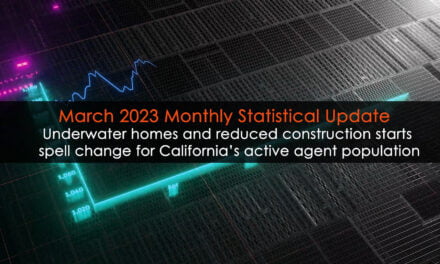The federal eviction moratorium has been extended yet again, bringing relief to struggling renters across the nation.
The eviction moratorium prohibits a landlord from removing a tenant who is unable to make rental payments due to financial hardship caused by the pandemic from a residential rental property, currently set to expire on June 30, 2021.
California enacted a similar statewide law which imposes a temporary moratorium on the eviction of residential tenants for nonpayment of rent that became delinquent between March 1, 2020 and June 30, 2021 due to the tenant’s coronavirus (COVID-19)-related financial distress.
While the federal eviction moratorium protects tenants from eviction due to non-payment of rent, it does not provide a loss mitigation plan for tenants or landlords. Once the ban is lifted, tenants will be expected to pay their entire back-rent or set up a payment plan at the discretion of their landlord. The landlord may pursue their losses in court, a costly and unreliable collection method for both the landlord and tenant.
Since the eviction moratorium has been in place for over 12 months now, many jobless tenants will be unable to cover the back-rent when the moratorium expires. On the other side of the coin, landlords, many of whom are small “mom and pop” landlords, simply cannot afford to go months without receiving rent.
Here in California, some loss mitigation will help shield landlords and tenants from the waterfall of back-rent due at the expiration of the moratorium. SB 91 was recently passed to provide landlords with 80% of the missed rent accrued between April 1, 2020 and March 31, 2021 by tenants earning less than 80% of the area’s median income in 2020. In return, landlords accepting the funds need to forgive the remaining balances built up in that time period.
But such protections do not exist universally. The Urban Institute estimates tenants owe between $8.4 billion and $52.6 billion in missed rents nationwide. Further, it estimates $50 billion is the minimum needed to maintain housing for families now and over the next several months.
Editor’s note — No comprehensive measures for tracking rental payments exist. Rather, rental payment information is obtained through surveys with relatively small sample sizes or are indirectly estimated, using non-housing related datasets showing unemployment claims and job losses.
Broken down to the household level, the average household behind on rent owes between $5,600 and $6,000. Put another way, the average renter is roughly four months behind on their rent.
Government-sponsored job creation: the surgeon and the stitches
Before the residential rental crisis can subside, tenants need to regain access to jobs.
California is down 1.4 million jobs from the pre-recession peak as of December 2020, a decline which canceled out the job growth that transpired for four years prior. By the second half of 2021, when the eviction and foreclosure moratoriums are currently scheduled to expire, expect a flood of distressed sales to begin hitting the market, overwhelming homebuyer demand and eventually deflated home prices.
The federal government has hinted at helping along jobs by providing stimulus to help private businesses remain afloat and continue employing workers. Additionally, government intervention in the form of initiatives to hire more infrastructure workers may come in the future.
Many landlords were already facing challenges before the pandemic, but the scale and scope of these challenges has since expanded. Landlords are facing delinquent rent payments and increased problems filling vacancies. Meanwhile, they are also required to pay their mortgage, property taxes and building upkeep costs. To keep landlords from laying off staff, thus creating even more job losses, the tenant eviction moratorium needs to be paired with assistance for landlords.
Although the eviction moratorium keeps renters from losing their housing, it is a temporary solution to mitigate the effects of the ongoing recession. A full jobs recovery is the key that is needed to keep the economy – and the real estate market – moving forward. At the current pace of recovery and without further intervention, this won’t occur until around 2023-2024.
Related article:














